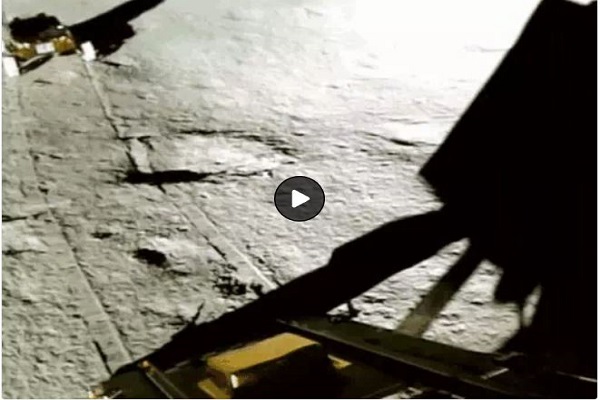[ad_1]
chandrayaan-3: Chandrayaan-3 sent a second observation on the fifth day (August 28) of reaching the moon. According to this, sulfur is present at the south pole of the moon. The presence of aluminum, calcium, iron, chromium, titanium has also been detected on the surface of the moon.
Apart from this, manganese, silicon and oxygen are also present in the soil of the moon, while the search for hydrogen is ongoing. That is, a total of 9 elements have been found in the soil of the moon so far. The LIBS or Laser Induced Breakdown Spectroscope payload mounted on the Pragyan rover sent these observations.
Can’t breathe directly from this oxygen
However, the oxygen found on the lunar soil is not in a form that can be breathed directly. It occurs as an oxide. Earlier, NASA also detected oxygen in the lunar soil. So ISRO was already likely to get oxygen here.
Oxides are a class of chemical compounds. Its structure consists of one or more oxygen atoms along with the element. Like Li2O, CO2, H2O, etc. H2O stands for water. So ISRO is now searching for H i.e. hydrogen after getting oxygen.
A laser is used in this experiment
In this experiment, a high-focus laser is used on the surface of the sample i.e. lunar soil or rock. Plasma is formed when a surface is heated. The element is detected by studying the spectrum formed from it. Different elements have different spectra.
Significant differences in temperature on the surface of the moon and at different depths
Earlier on August 27, the chest payload fitted to Chandrayaan-3’s Vikram lander sent the first observation related to the Moon’s temperature. According to ChaSTE i.e. Lunar Surface Thermophysical Experiment, there is a huge difference between the temperature on the surface of the moon and at different depths.
The temperature on the surface of the Moon’s south pole is about 50 degrees Celsius. While a temperature of minus 10 degrees Celsius was recorded at a depth of 80 mm. There are 10 temperature sensors in the chest, which can reach a depth of 10cm ie 100mm.
The ChaSTE payload has been developed by the Space Physics Laboratory, VSSC in collaboration with the Physical Research Laboratory, Ahmedabad.
What is the benefit of knowing the temperature of the South Pole?
ISRO chief S Somnath had said that they chose the south pole of the moon because it may have the potential to host humans in the future. Sunlight at the South Pole lasts for a short time. Now that Chandrayaan-3 is sending clear information about the temperature and other things there, scientists will now try to understand how much soil the moon’s south pole actually has.
The rover moves at a speed of 1 cm per second
The six-wheeled rover weighs 26 kg. About 14 hours after landing on Thursday morning, ISRO confirmed the exit of the rover. The lander landed on the moon on August 23 at 6.4 pm. It moves at a speed of 1 cm per second and uses a navigation camera to scan its surroundings.
TV, FACEBOOK, YOUTUBE from First every the news to read for Download do PRO PUNJAB TV APP
APP Download to do for Link ‘on Click do:
Android: https://bit.ly/3VMis0h
[ad_2]
Source link
